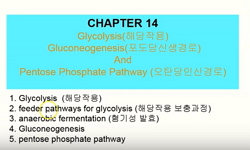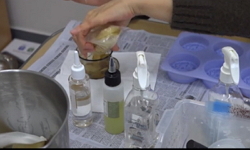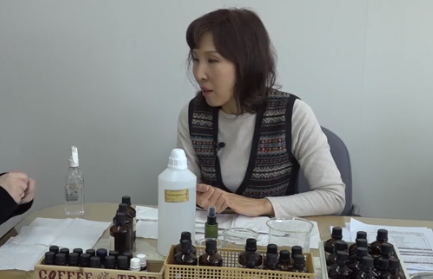This study was performed for effects on metabolism and electroencephalography by volatile compounds in basil(Ocimum basilicum). As a result of proximate composition analysis of basil, 88.53±0.88% of moisture, 7.28±0.89% of carbohydrate, 2.13±0.15% ...
http://chineseinput.net/에서 pinyin(병음)방식으로 중국어를 변환할 수 있습니다.
변환된 중국어를 복사하여 사용하시면 됩니다.
- 中文 을 입력하시려면 zhongwen을 입력하시고 space를누르시면됩니다.
- 北京 을 입력하시려면 beijing을 입력하시고 space를 누르시면 됩니다.
바질의 휘발성 성분에 의한 생체 대사 및 뇌파 변화에 관한 연구 = A Study for Effects on Metabolism and Electroencephalography by Volatile Compounds in Basil(Ocimum basilicum)
한글로보기https://www.riss.kr/link?id=T14863196
- 저자
-
발행사항
진주 : 경남과학기술대학교 일반대학원, 2018
-
학위논문사항
학위논문(석사) -- 경남과학기술대학교 일반대학원 , 식품과학과 , 2018. 8
-
발행연도
2018
-
작성언어
영어
- 주제어
-
발행국(도시)
경상남도
-
형태사항
26 cm
-
일반주기명
지도교수: 신의철
-
UCI식별코드
I804:48015-200000108767
- 소장기관
-
0
상세조회 -
0
다운로드
부가정보
다국어 초록 (Multilingual Abstract)
This study was performed for effects on metabolism and electroencephalography by volatile compounds in basil(Ocimum basilicum). As a result of proximate composition analysis of basil, 88.53±0.88% of moisture, 7.28±0.89% of carbohydrate, 2.13±0.15% of protein, 1.80±0.03% of ash and 0.26±0.02% of lipid were determined. The highest content of constituent amino acids and free amino acids in basil was glutamic acid and aspartic acid were followed. The total phenol contents of basil essential oil(BEO) were analyzed to be 0.26±0.01 mg/mL. The antioxidant activity of 2,2-diphenyl-1-picrylhydrazyl(DPPH) and 2,2'-azino-bis3-ethyl benzo–thiazoline-6-sulphonic acid(ABTS) in BEO were 32.00±1.84% and 78.50±1.49% respectively. The volatile compounds in basil and BEO were analyzed using solid phase micro extraction(SPME) and gas chromatography-mass spectrometry(GC/MS). Linalool was major compound in both basil and BEO and eugenol and menth-4-ene were followed. Electronic nose(E-nose) was used to measure the flavor characteristics of basil and BEO. Basil was richer in ammonia and BEO had a higher concentration of hydrogen sulfide. In vivo study using rat model were carried out to investigate the changes in vivo caused by inhalation of BEO. The 4 groups were divided according to the inhalation conditions into unflavored group(Control), group of inhaling the 1% linalool for 5 min(Positive), 1% BEO for 5 min(5min) and 1% BEO for 20 min(20min). Food intake and body weight were measured by once a week during feeding. As a result of food intake, no significantly different(P>0.05) were investigated among groups in all weeks and result of weight, the control group was highest in the final week and the 20min group was lowest in the same week. Sucrose(1%) intake test and forced swimming test were performed by once a week as behavioral experiments about depression. The sucrose intake was increased in all groups but the increase of positive group was higher than that of other groups. The forced swimming test showed that immobility time decreased in all groups. During same period, blood pressure of animals was measured by once a week. In all groups except for the control group, systolic blood pressure increased. Also, diastolic blood pressure increased and pulse rates decreased in all groups. Serum and organs were obtained after the sacrifice of animals and measured the weight of organs. Weight of brain tissues and kidney tissues were highest in 5min group and white adipose tissues were highest in control group and lowest in positive group. Total cholesterol, high density lipoprotein(HDL) and triglyceride(TG) were measured in the serum. The total cholesterol, low density lipoprotein(LDL) and TG contents were the highest in the control group whereas HDL content was the lowest. It was the opposite in the 20min group. Glutamic-pyruvic transaminase(GPT) and glutamic oxaloacetic transaminase(GOT) contents in the serum were measured to investigate the hepatotoxicity in liver using the serum. GPT was the highest in the control group and GOT was not significant difference(P>0.05) in all groups. Cortisol and serotonin contents in the serum were measured and not significantly different(P>0.05) among groups. However, compared by average, cortisol content was the highest in the control group and lowest in the positive group and the serotonin content was the opposite. Electroencephalography(EEG) and blood pressure of 12 subjects were measured before and after inhalation of 1% BEO. The 10 data were selected by head-tail cut and analyzed by dividing to theta, alpha, beta, and gamma waves and to absolute power and relative power. As a result, theta wave and alpha wave decreased and beta wave and gamma wave increased. These results suggest that after inhalation of 1% BEO, relaxation of the accident, increase of mood and cognition and activation of consciousness appeared. As a result of the blood pressure, there are a few significantly different(P<0.05). However, compared by average, systolic, diastolic blood pressure and pulses decreased after the inhalation. The amount of cortisol in the saliva was measured before and after inhalation of 1% BEO and significantly increased in 30% of the subjects(P<0.05). This result can be used as a basic data for the study about physiological function of basil and basil essential oil as aromatherapy based on the physicochmical, in vivo study by rat model and clinical approach.
목차 (Table of Contents)
- LIST OF TABLE ⅰ
- LIST OF FIGURE ⅳ
- I. INTRODUCTION 1
- 1. Background information 1
- LIST OF TABLE ⅰ
- LIST OF FIGURE ⅳ
- I. INTRODUCTION 1
- 1. Background information 1
- 2. Importance of research 4
- 3. Purpose of research 5
- II. MATERIALS 6
- 1. Samples 6
- 2. Materials 6
- III. METHODS 7
- 1. Physicochemical study 7
- 1.1 Proximate composition 7
- 1.1.1 Moisture 7
- 1.1.2 Ash 7
- 1.1.3 Lipid 8
- 1.1.4 Protein 8
- 1.1.5 Carbohydrate 9
- 1.1.6 Constituent amino acid 9
- 1.1.7 Free amino acid 9
- 1.2 Total phenol contents and antioxidant capacity 11
- 1.2.1 Total phenol content 11
- 1.2.2 DPPH 11
- 1.2.3 ABTS 11
- 1.3 Volatile compounds 12
- 1.3.1 Solid-phase microextraction(SPME) 12
- 1.3.2 Olfactory detection 13
- 1.3.3 Electronic nose(E-nose) 13
- 2. Animal study 13
- 2.1 Animals and breeding condition 13
- 2.2 Chronic mild stress(CMS) 14
- 2.3 Inhalation condition 17
- 2.4 Behavior test 19
- 2.4.1 Sucrose intake test 19
- 2.4.2 Forced swimming test 19
- 2.5 Blood pressure 21
- 2.6 Sacrifice 21
- 2.7 Serum and tissue analysis 21
- 2.7.1 Total cholesterol(TC) 21
- 2.7.2 High density lipoprotein(HDL) cholesterol 22
- 2.7.3 Low density lipoprotein(LDL) cholesterol 22
- 2.7.4 Triglyceride(TG) 22
- 2.7.5 Glutamic pyruvic transaminase(GPT) 23
- 2.7.6 Glutamic oxaloacetic transaminase(GOT) 23
- 2.7.7 Cortisol 24
- 2.7.8 Serotonin 25
- 3. Clinical study 25
- 3.1 Subjects and measurement condition 25
- 3.2 Electroencephalography(EEG) 26
- 3.3 Blood pressure and pulse 28
- 3.4 Cortisol 28
- 4. Statistical analysis 28
- IV. RESULTS AND DISCUSSION 30
- 1. Physicochemical study 30
- 1.1 Proximate composition 30
- 1.2 Total phenol content and antioxidant capacity 33
- 1.3 Volatile compounds 36
- 2. Animal study 47
- 2.1 Food intake and weight 47
- 2.2 Behavior test 51
- 2.2.1 Sucrose intake test 51
- 2.2.2 Forced swimming test 53
- 2.3 Blood pressure 55
- 2.4 Tissue weight 59
- 2.5 Serum and tissue analysis 61
- 2.5.1 Cholesterol and triglyceride(TG) 61
- 2.5.2 Hepatotoxicity 63
- 2.5.3 Cortisol and serotonin 65
- 3. Clinical study 67
- 3.1 Electroencephalography(EEG) 67
- 3.1.1 Theta wave 67
- 3.1.2 Alpha wave 71
- 3.1.3 Beta wave 76
- 3.1.4 Gamma wave 80
- 3.2 Blood pressure and pulse 84
- 3.3 Cortisol 88
- V. REFERENCES 90
- ABSTRACT 100
- ABSTRACT(KOREAN) 103












